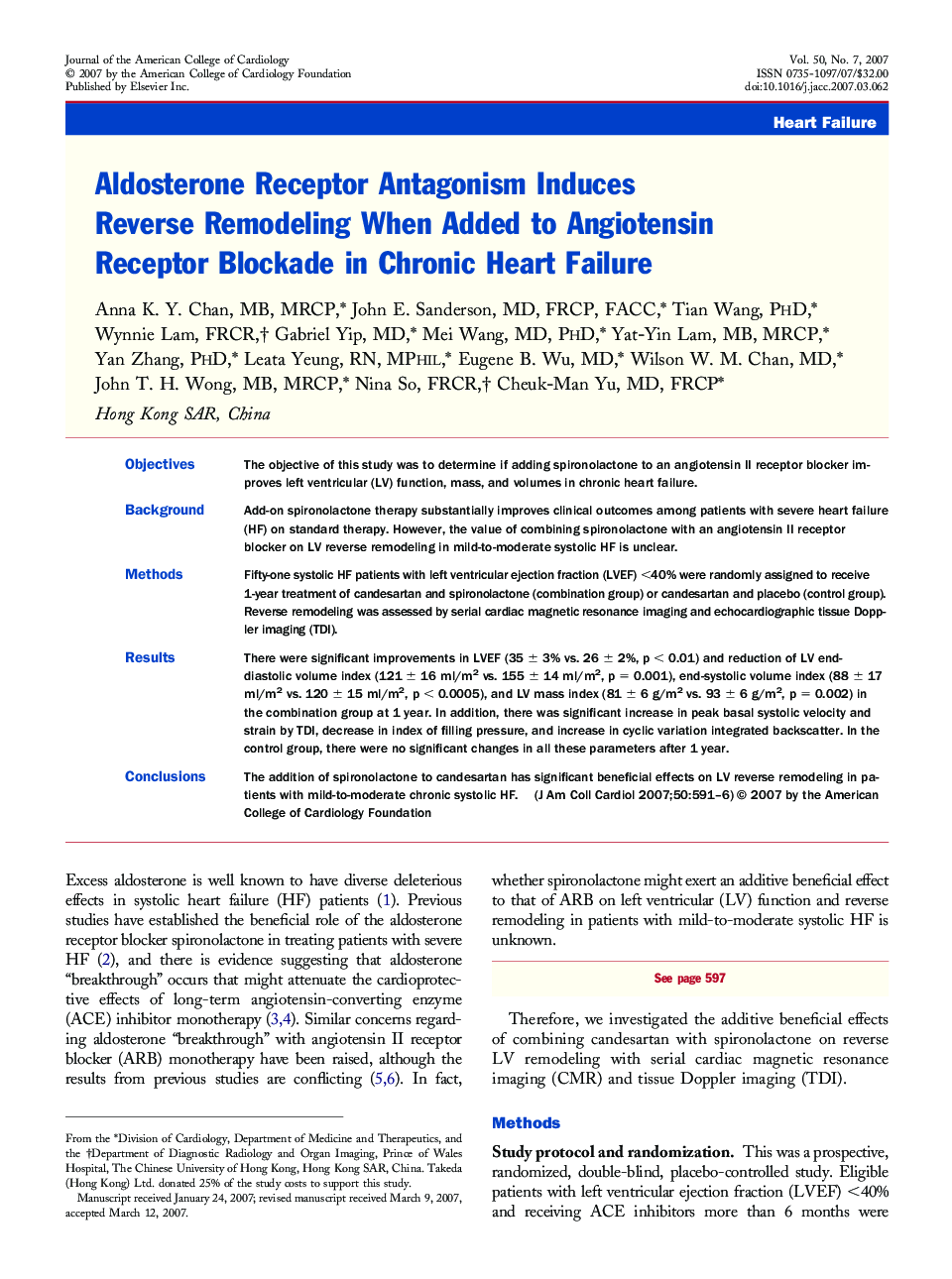| Article ID | Journal | Published Year | Pages | File Type |
|---|---|---|---|---|
| 2954612 | Journal of the American College of Cardiology | 2007 | 6 Pages |
ObjectivesThe objective of this study was to determine if adding spironolactone to an angiotensin II receptor blocker improves left ventricular (LV) function, mass, and volumes in chronic heart failure.BackgroundAdd-on spironolactone therapy substantially improves clinical outcomes among patients with severe heart failure (HF) on standard therapy. However, the value of combining spironolactone with an angiotensin II receptor blocker on LV reverse remodeling in mild-to-moderate systolic HF is unclear.MethodsFifty-one systolic HF patients with left ventricular ejection fraction (LVEF) <40% were randomly assigned to receive 1-year treatment of candesartan and spironolactone (combination group) or candesartan and placebo (control group). Reverse remodeling was assessed by serial cardiac magnetic resonance imaging and echocardiographic tissue Doppler imaging (TDI).ResultsThere were significant improvements in LVEF (35 ± 3% vs. 26 ± 2%, p < 0.01) and reduction of LV end-diastolic volume index (121 ± 16 ml/m2vs. 155 ± 14 ml/m2, p = 0.001), end-systolic volume index (88 ± 17 ml/m2vs. 120 ± 15 ml/m2, p < 0.0005), and LV mass index (81 ± 6 g/m2vs. 93 ± 6 g/m2, p = 0.002) in the combination group at 1 year. In addition, there was significant increase in peak basal systolic velocity and strain by TDI, decrease in index of filling pressure, and increase in cyclic variation integrated backscatter. In the control group, there were no significant changes in all these parameters after 1 year.ConclusionsThe addition of spironolactone to candesartan has significant beneficial effects on LV reverse remodeling in patients with mild-to-moderate chronic systolic HF.
